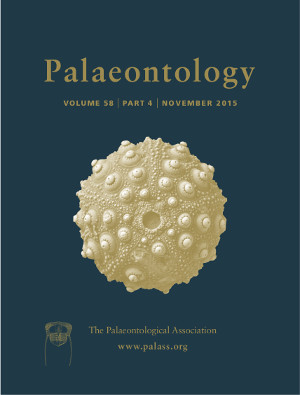Reg. Charity No. 1168330

Studies of Ordovician micromeric fish scales from the Sandbian of North America have identified a number of scale‐based taxa potentially referable to the chondrichthyans and therefore can be among the stratigraphically oldest representatives of the clade described to date. Two of these, Tezakia hardingensis gen. et sp. nov. and Canyonlepis smithae gen. et sp. nov., are formally described herein. Tezakia gen. nov. scales are composed exclusively of tubular dentine and possess polyodontocomplex crowns with a characteristically large primordial odontode. Similar scale crown architecture has been reported only in the reputed chondrichthyan Altholepis composita (Lower Devonian of Podolia, Ukraine), and on these grounds, the two are united within the newly erected Altholepidiformes ordo nov. Multiple odontocomplexes are also a feature of Canyonlepis gen. nov. scale crowns; however, the latter do not demonstrate prominent primordial odontodes and are supported by a base composed of acellular bone. Additional data suggest that both taxa possess a combination of characteristics (areal crown growth, scale symmetry, linear odontocomplex architecture and absence of enamel, osteons, cancellous bone and hard‐tissue resorption) previously documented to occur only in chondrichthyan scales. This study contributes to a growing body of evidence that reveals the presence of diverse tissue types (bone, tubular and atubular dentine) and morphogenetic patterns (odontocomplex and non‐odontocomplex type of scale crown growth) in the dermal skeleton of putative Ordovician chondrichthyans.